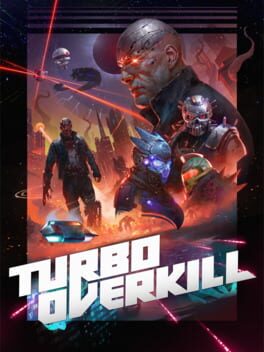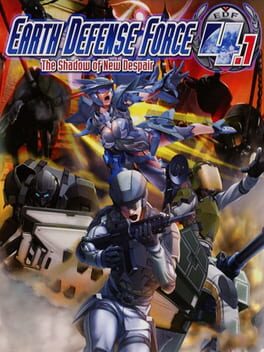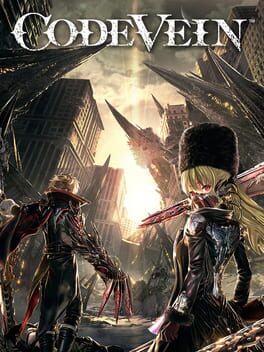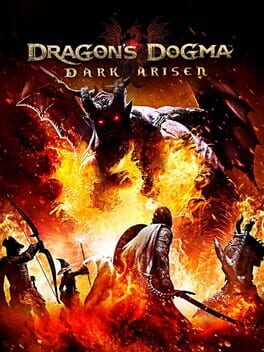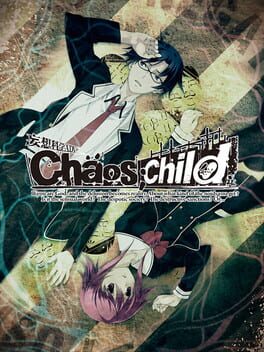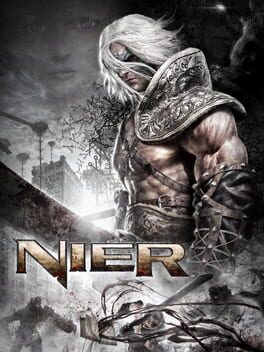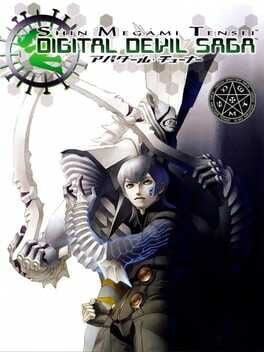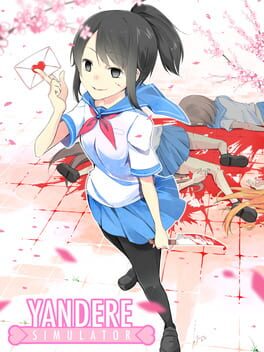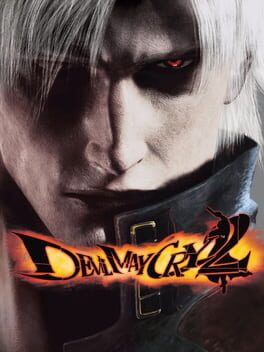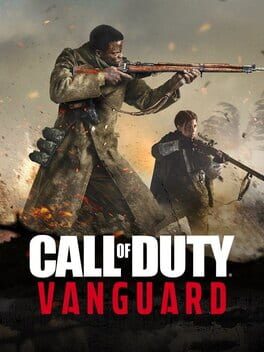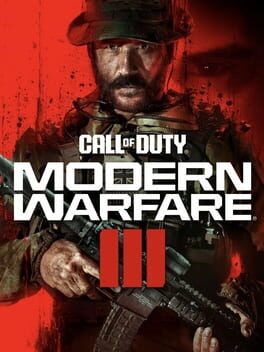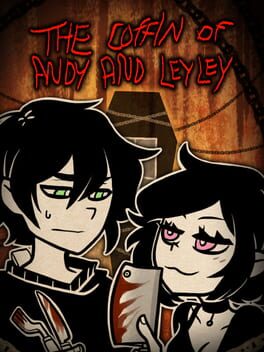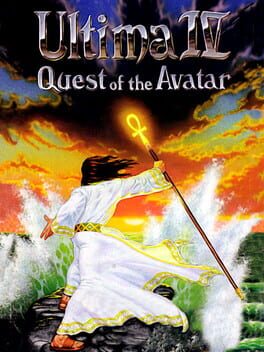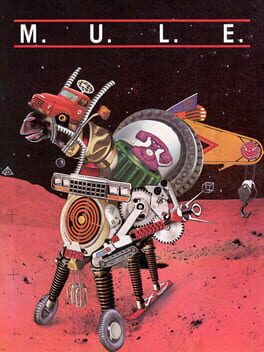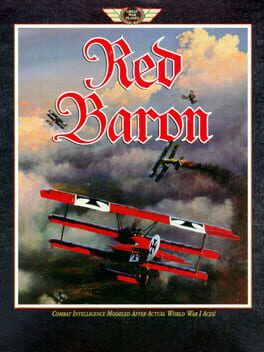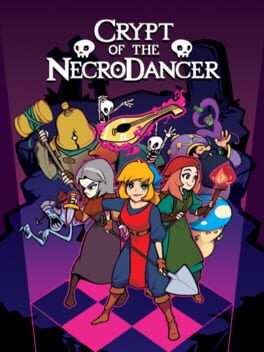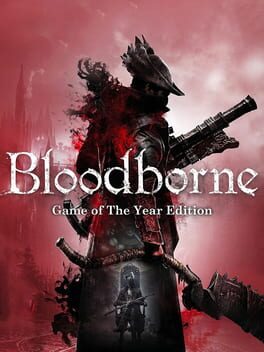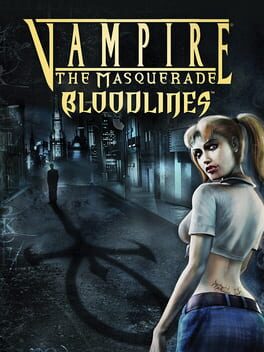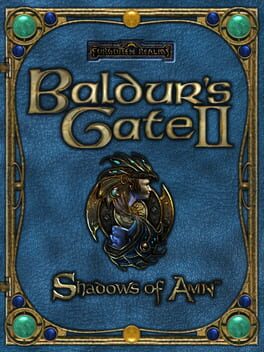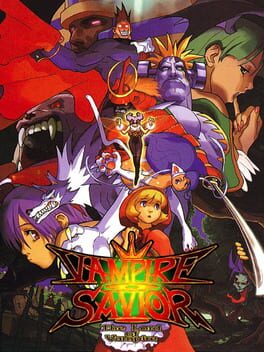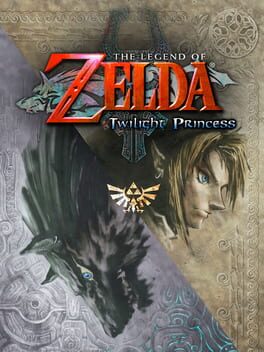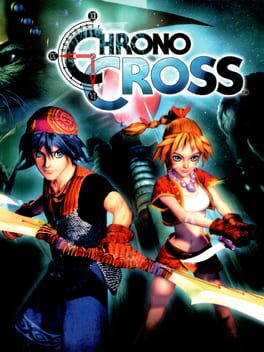Replicant1737
352 reviews liked by Replicant1737
Animal Well
2024
It is the closest any game since Hollow Knight has gotten to recapturing that feeling, so you KNOW this game is going to be peak. Considering this was made entirely by one dude including the engine over 7 years, they managed to craft something absolutely extraordinary here. The lack of any direction makes exploring this beautifully dark and atmospheric well so surprising. It's equal parts terrifying and joyful to see how the animals react to everything you do.
This game has maybe the best use of metroidvania upgrades in history??? With each new item having dozens upon dozens of different uses based on the animals it interacts with, how you interact with it, and more. This huge swab of options leads to some of the most cleverly designed puzzles and "boss" sequences I've seen in such a long time.
If there is one issue I have with the game is that I was kind of hoping for more on the music end, but it fits a good amount of areas in the game and the sound design is so amazing that it sticks with me just as hard. It's truly astounding how a game like this can come out from such an unassuming place, a 33MB game developed by one dude and published by a fucking YouTuber ended up quickly becoming my favorite game of the year, and unless my trip to Pharloom is booked this year as I hope for so dearly, I doubt anything will beat it.
This game has maybe the best use of metroidvania upgrades in history??? With each new item having dozens upon dozens of different uses based on the animals it interacts with, how you interact with it, and more. This huge swab of options leads to some of the most cleverly designed puzzles and "boss" sequences I've seen in such a long time.
If there is one issue I have with the game is that I was kind of hoping for more on the music end, but it fits a good amount of areas in the game and the sound design is so amazing that it sticks with me just as hard. It's truly astounding how a game like this can come out from such an unassuming place, a 33MB game developed by one dude and published by a fucking YouTuber ended up quickly becoming my favorite game of the year, and unless my trip to Pharloom is booked this year as I hope for so dearly, I doubt anything will beat it.
Elden Ring
2022
Portal 2
2011
Much like the first game, the story and humor are on point in Portal 2. Wheatley is a great counterpart for GLaDOS. The mechanics are substantially expanded from the first game with the various types of goo, and I enjoyed the variety of new puzzles that provided.
The intro to the game really drags on, though, with lots of incredibly easy puzzles and loading screens. I would have preferred if it jumped into more challenging puzzles much more quickly. I liked the general idea of the non-puzzle areas, but I did get a bit tired of hunting around for the little bit of wall that I could put a portal on.
Those are just minor complaints, though. While Portal 2 isn't necessarily a personal favorite, I can see why it's generally rated among the best games of all time.
The intro to the game really drags on, though, with lots of incredibly easy puzzles and loading screens. I would have preferred if it jumped into more challenging puzzles much more quickly. I liked the general idea of the non-puzzle areas, but I did get a bit tired of hunting around for the little bit of wall that I could put a portal on.
Those are just minor complaints, though. While Portal 2 isn't necessarily a personal favorite, I can see why it's generally rated among the best games of all time.
Turbo Overkill
2022
The headline is this: Turbo Overkill is SO FRICKIN FUN. This is an indie (I think) take on a Doom 2016/Eternal -- old school shootin' with HD graphics, big guns and platforming -- but the twist is you have a chainsaw leg that absolutely RIPS through enemies.
Because this is an episodic game with three distinct campaigns taking about 15 hours total to run through, the pacing almost feels like you're playing a trilogy of small games rather than one large one. You can tell the developers learned where they wanted to take their vision for Turbo Overkill as they developed it through the early access process, and in many ways you see improvements in episodes 2/3 over the first.
It packs so much in here. Bosses, platforming segments, vehicular sections, labyrinthian levels with keys, arena style encounters, wave-based encounters, and an enormous breadth of environmental/art design that betrays the cookie cutter cyberpunk story you begin the game with.
While this is impressive, this massive scope is also what holds Turbo Overkill back from being one of the greatest shooters of all time. There's too much of it! Most levels are 30 minutes long and feel like they should be 15-20, and nearly all of the gimmicky sections like boss fights and vehicle sections get overindulgent. At a certain point it just keeps throwing waves of the same enemy types, and while the gunplay feels great, it can get exhausting.
But if you like nu-Doom and want a boomer shooter that feels more like that game than a shooter from 1999, I can't recommend TO enough. The weapons feel great, the alt-fires rock, and ripping through enemies sliding around on a chainsaw leg like a fricked up Tony Hawk feels ethereal. And the story, for as clunky as it can get at times, is a pretty funny take on a grim sci-fi narrative.
So while you have to put up with a bit, I ultimately think doing so is worth it because on the other side of that friction is some of the most fun first person shooting I've probably ever played.
P.S. It works great on Steam Deck now! Set it to 40 fps in your device-level settings and go nuts! But turn off auto-aim. You probably don't need it and I think it's way too aggressive.
Because this is an episodic game with three distinct campaigns taking about 15 hours total to run through, the pacing almost feels like you're playing a trilogy of small games rather than one large one. You can tell the developers learned where they wanted to take their vision for Turbo Overkill as they developed it through the early access process, and in many ways you see improvements in episodes 2/3 over the first.
It packs so much in here. Bosses, platforming segments, vehicular sections, labyrinthian levels with keys, arena style encounters, wave-based encounters, and an enormous breadth of environmental/art design that betrays the cookie cutter cyberpunk story you begin the game with.
While this is impressive, this massive scope is also what holds Turbo Overkill back from being one of the greatest shooters of all time. There's too much of it! Most levels are 30 minutes long and feel like they should be 15-20, and nearly all of the gimmicky sections like boss fights and vehicle sections get overindulgent. At a certain point it just keeps throwing waves of the same enemy types, and while the gunplay feels great, it can get exhausting.
But if you like nu-Doom and want a boomer shooter that feels more like that game than a shooter from 1999, I can't recommend TO enough. The weapons feel great, the alt-fires rock, and ripping through enemies sliding around on a chainsaw leg like a fricked up Tony Hawk feels ethereal. And the story, for as clunky as it can get at times, is a pretty funny take on a grim sci-fi narrative.
So while you have to put up with a bit, I ultimately think doing so is worth it because on the other side of that friction is some of the most fun first person shooting I've probably ever played.
P.S. It works great on Steam Deck now! Set it to 40 fps in your device-level settings and go nuts! But turn off auto-aim. You probably don't need it and I think it's way too aggressive.
only took three and a half years, but through my innovative technique of playing a handful of missions every four months I have finally taken down this beast. absurd how structurally lazy this game is: 89 single-player missions, all back-to-back with no side quests or key quest system or any sort of progression/organization beyond "play a mission and then unlock the next one." it should be obvious that most of these missions bear more than a small resemblance to one another due to the comparative dearth of maps and enemy types, so throwing the player into this many mandatory missions just exacerbates the repetition. sure, this is a game oriented around an endless grind for weapon and armor drops, but evidently the game's bounty of missions vastly exceed the bounds of the game's weapon pools given that identical pools appear in many of the missions on a given difficulty and rarely give new items. the weapon level drop curve is such that even running the first couple of missions on inferno, the highest difficulty, primarily gave me weapons I already had from midgame on normal, three difficulties below it. this would be more bearable if at least the weapon pools between all four classes were shared... but they aren't, so good luck if you played through the campaign with one class and would like to switch on the next difficulty up, because you won't have shit to work with. the developers recognized these unforced errors because edf5 rectified a fair number of them (primarily shared weapon pools and an upgrade system when you pick up a dupe), but it stings a bit that this entry completely fumbles these elements here.
I'm dedicated to fencer (the armored suit class) through and through, and in this particular entry fencer gets an essential (if perhaps not intended) dash cancel that lifts the weight of the rest of the game on its back. by firing the otherwise mediocre javelin catapult directly after executing a side dash, the ending lag of the dash will get overwritten with extremely fast javelin recovery frames, enabling quick dash spam across the battlefield. a couple weapon types possess the side dash as an auxillary ability, with perhaps no one more busted than the blasthole spear lineage, which provide rapid-fire, high-DPS shots at close range. the synergy is quickly clear: hit-and-run tactics with the spears and the dash cancel can easily depose even spongier enemies as long as one manages their cooldowns. of course, if this was the whole gameplan, the game would stale over such a long campaign, but luckily the fencer uniquely possesses switchable item sets. I kept a mid-range cannon and long-range mortars on deck in the other set for most of the ride as heavy artillery to deal the majority of my long-range damage, and since these remove the incredible mobility of the javelin/spear combo, you have a comfortable role trade-off to deal with in each fight. switching sets can't be done willy-nilly, and outside of wakeup animations most recovery lag will keep you from swapping, preserving the commitment of the most truly heinous fencer weaponry. the sluggish movement of the fencer normally would not necessarily be fun to use, as it would submerge the game into wading through enemies and tanking shot after shot, but this particular dash-cancel wrinkle helps sell a hot-and-cold playstyle that one rarely finds in a third-person shooter.
scenario-wise, probably one of the best examples I can think of where simply mass-spawning identical enemies makes for very solid encounters. although my brain would like to call it a TPS musou, it really hews closer to a wave shooter or arena shooter due to the centralization of the battle around the player character. you may enter with allies to assist you, but they rarely last past the first wave, and thus the game devolves into controlling the mass of enemies following you and you alone around the map. at its worst, it's a lot of kiting, either soothed by the need to stop to unleash your best weapons or agitated by the need to build up a healthy distance from the enemies before you unleash your best weapons, depending on how you look at it. only the cheap fodder succumb to pure tracking tactics, however, and with enough alternate opponents that lockdown certain parts of the map, roam, or patrol, you can find yourself properly flanked in a way the fodder can't do alone. of these the most fundamental are the hectors: large bipedal robots with an assortment of heavy weaponry and shields. getting in one's sights can subject the player to anything from full-map range plasma shots to short-range sheets of sparks, the latter of which portends poorly for any fencer player clamped to the ground by it. the variety of these and the use of different AI routines for each make hectors an essential flavor for any environment, especially maps with lots of enemy spawn points. other large enemies are equally fascinating (the segmented quadruped deroys and their long-range leg melee are rather fierce), yet the bosses tend to make clear how much of the game relies on hundreds of adds running around the screen at once due to their gigantic hurtboxes and rudimentary behavior. perhaps this is why the final boss opts for a much smarter strategy of smothering the earth with artificial ceiling of weaponry, with the top hurtbox only accessible when openings in the ceiling plates have been cracked open.
I'm dedicated to fencer (the armored suit class) through and through, and in this particular entry fencer gets an essential (if perhaps not intended) dash cancel that lifts the weight of the rest of the game on its back. by firing the otherwise mediocre javelin catapult directly after executing a side dash, the ending lag of the dash will get overwritten with extremely fast javelin recovery frames, enabling quick dash spam across the battlefield. a couple weapon types possess the side dash as an auxillary ability, with perhaps no one more busted than the blasthole spear lineage, which provide rapid-fire, high-DPS shots at close range. the synergy is quickly clear: hit-and-run tactics with the spears and the dash cancel can easily depose even spongier enemies as long as one manages their cooldowns. of course, if this was the whole gameplan, the game would stale over such a long campaign, but luckily the fencer uniquely possesses switchable item sets. I kept a mid-range cannon and long-range mortars on deck in the other set for most of the ride as heavy artillery to deal the majority of my long-range damage, and since these remove the incredible mobility of the javelin/spear combo, you have a comfortable role trade-off to deal with in each fight. switching sets can't be done willy-nilly, and outside of wakeup animations most recovery lag will keep you from swapping, preserving the commitment of the most truly heinous fencer weaponry. the sluggish movement of the fencer normally would not necessarily be fun to use, as it would submerge the game into wading through enemies and tanking shot after shot, but this particular dash-cancel wrinkle helps sell a hot-and-cold playstyle that one rarely finds in a third-person shooter.
scenario-wise, probably one of the best examples I can think of where simply mass-spawning identical enemies makes for very solid encounters. although my brain would like to call it a TPS musou, it really hews closer to a wave shooter or arena shooter due to the centralization of the battle around the player character. you may enter with allies to assist you, but they rarely last past the first wave, and thus the game devolves into controlling the mass of enemies following you and you alone around the map. at its worst, it's a lot of kiting, either soothed by the need to stop to unleash your best weapons or agitated by the need to build up a healthy distance from the enemies before you unleash your best weapons, depending on how you look at it. only the cheap fodder succumb to pure tracking tactics, however, and with enough alternate opponents that lockdown certain parts of the map, roam, or patrol, you can find yourself properly flanked in a way the fodder can't do alone. of these the most fundamental are the hectors: large bipedal robots with an assortment of heavy weaponry and shields. getting in one's sights can subject the player to anything from full-map range plasma shots to short-range sheets of sparks, the latter of which portends poorly for any fencer player clamped to the ground by it. the variety of these and the use of different AI routines for each make hectors an essential flavor for any environment, especially maps with lots of enemy spawn points. other large enemies are equally fascinating (the segmented quadruped deroys and their long-range leg melee are rather fierce), yet the bosses tend to make clear how much of the game relies on hundreds of adds running around the screen at once due to their gigantic hurtboxes and rudimentary behavior. perhaps this is why the final boss opts for a much smarter strategy of smothering the earth with artificial ceiling of weaponry, with the top hurtbox only accessible when openings in the ceiling plates have been cracked open.
Code Vein
2019
If you're into or can get past the cybergoth anime vampire aesthetic and accompanying writing and character mannerisms, this is a competent and above average souls clone to dabble into.
It has some neat mechanics that set it apart from simply being weeaboo dark souls. However its distinct lack of enemy variety and some middle of the road level design hurt the fairly lengthy experience. I clocked in around 20 hours but I'd already seen all the enemies the game had to offer about a third of the way in. Fighting the same enemies for an extended runtime starts to get dull and I wish there were more and with greater variance. As too many foes end up being guys with weapons and little else.
At the end of the day I enjoyed my time with it and I'll probably replay it in the future. If you like souls games and their copycats you're likely to enjoy Code Vein. Just don't expect a mindblowing experience.
It has some neat mechanics that set it apart from simply being weeaboo dark souls. However its distinct lack of enemy variety and some middle of the road level design hurt the fairly lengthy experience. I clocked in around 20 hours but I'd already seen all the enemies the game had to offer about a third of the way in. Fighting the same enemies for an extended runtime starts to get dull and I wish there were more and with greater variance. As too many foes end up being guys with weapons and little else.
At the end of the day I enjoyed my time with it and I'll probably replay it in the future. If you like souls games and their copycats you're likely to enjoy Code Vein. Just don't expect a mindblowing experience.
In a 2013 GDC talk on the development of Dragon’s Dogma. The director Hideaki Itsuno wanted specific principles: “high degree of freedom, simple action, highly realistic.” With examples: Elder Scrolls Oblivion, Fallout 3, and Fable 2. Disclosing their units shipped and the same quality/s each possesses. These three aspects I'm quite fond of. With the first as numero uno what I look for. Freedom. Always. His “job was to convince internal members of Capcom that this is a challenge he wanted to take on. Similar games in this open world RPG genre didn't really exist in Japan. And they weren’t able to accurately forecast if the project would sell or the market potential.”
I couldn’t help but remember a comparable individual I look up to, Tetsuya Takahashi. The man behind the creation of the Xeno series along with his team and his wife Soraya Saga. In a 2015 Venturebeat interview he answered a question on what is the "biggest difference between Western and Japanese audiences, especially in terms of what they want from a role-playing game?” Takahashi said “What you’ll find quite often is that a lot of the markets outside of Japan are interested in games where you can do anything you want. They put a high priority on a great degree of freedom. In the Japanese market, it’s more common for people will demand a certain flow to the events in a game. We find that they’re more comfortable with a linear framework. We have our theories about why this might be.”
The comparison is relative due to the creators of their respective franchises aspiring to replicate near identical reception and appeal within their works. To differing results. Moving outside their comfort zone creating a fusion in a way. As much as I would revel in going off on Xenoblade Chronicles X, that’s a story for another time. Among the challenges and expectations, Itsuno is trying to match Skyrim’s massive reception with Dragon’s Dogma. An ambitious endeavor I appreciate as he remarks transparently in March 20, 2012. “At Capcom, we’ve made Dragon’s Dogma and come up to this point through our experience of action games. We’re trying to make a new genre: We’re using our action heritage and putting that into an action RPG.”
Emphasizing “changing action RPG to ACTION rpg.” Going for ambition is not inherently wrong. Great to have these goals to strive towards. As long as they stick the landing, journey and beginning. And I must say, after 3 playthroughs. One on normal, on hard mode, and finishing a speedrun whilst completing everything I can in postgame and the DLC on Bitterback isle of the Dark Arisen version, I firmly believe they succeeded in accomplishing all three qualities. However, despite my abundant enjoyment I did come across a sizable bulk of concerns I’ll discuss later in my mixed feelings. For now, I’ll discuss immediate sections I love.
Freedom is unrestricted. You can forget the main quest and go gallivanting off the beaten path and run towards any place on the map. Delving freely into dark dungeons, rocky caverns or forgotten ruins where a lantern is a must to combat the darkness. Filled with a plethora of variable attackers you won’t usually see copy-paste monsters on a budget. Harpies, undead skeletons, zombies, knights, mages, bandits, goblins, liches, ghosts, ogres, and etc. Even their variants are suitable. Clashing heavyweights against yours. Thus I can’t complain on the diverse enemy enriching every location you stumble in your wanderlust. Speaking of stumbling, you can upon completing a small bit of central plot early on set your fast travel points within reason. I didn’t like the approach since you receive a limited lot but ultimately came around to liking the unorthodox system. Helped by the fact the world didn’t feel too huge to traverse. Nor too meager to explore the sum of the whole caboodle within a short amount of time. Instead, the locales are filled with interesting locations. Multiple medium to large-scale dungeons displaying serviceable level design beyond linear corridors. Plenty of paths to tread both up and down. Breathtaking scenery during adventures. Bluemoon Tower made me feel as if I was transported in Rome’s Colosseum except fantasied. Ruined in decay where a single step can lead to certain death. Or embark on a long fog-filled forest where directions can prove futile for a newbie traveler. Yet for the experienced, hitting misty poles can unveil the true path. Mayhaps you will partake in a water temple? Which by the gods isn’t as arduous as other infamous water temples in games I’ve played. Link would breathe a sigh of relief here. Levers and switches to change the water level. Or for the speedy, they can excuse the routes and with careful jumping reach the end of the dungeon. Outside the danger is palpable with special zones where never-before-seen creatures lurk. Dangerous lichs and small drakes patrol. A functional day/night cycle capable of giving goosebumps if you decide to tackle the absence of sun with naught but your companions along. Hopefully, you brought ample oil flasks for your lantern. Cause oh boy does the night present dangerous adversaries not just in a greater supply of darker denizens but boss behemoths roaming the lands. Reminded me a bit of turning tail and running towards safety amid the nights in Dying Light. Seeing a chimera pop up near my location still gives me shivers…
Additionally changing vocations called classes and specializing in whatever playstyle you so choose is near-painless. Parallel to the weapon classes from Monster Hunter, but different. As you kill bounties of opponents and level up your vocation rank, unlock new skills and abilities. Allowed me to play as a mystic knight capable of dishing out spells while tanking with a shield and upon switching my staff in the menu. I return, bashing heads without remorse. Each class is satisfying with strengths and weaknesses. I honestly didn’t expect to fancy bow and arrows, and DD made me a fan of archery. What the heck man? I was a longtime Greatsword user.Heck, you can grab and climb any large creature during conflicts whenever. Hiroyuki Kobayashi, the producer said in an 2011 Siliconera interview. How DD’s grab mechanic in addition to “...the main character can go and do whatever he wants in this world, it gave birth to the idea that he’s fighting enemies and he should be able to fight them in any way that he wants and so we came up with the idea of the grabbing mechanic. He can climb on these enemies and fight them however he chooses.” A defining trait adding an essential option for players to tactfully embrace a closer savage quarrel against any terrifying freaks. Though the concept isn’t fresh, Shadow of the Colossus(SOTC) requires players to climb and weaken a colossus by striking their weak-spots. The influence I feel resonates still with characters conducting similar operations. If I am climbing a Cyclops then surely the eye is the weakness right?! Yes! Chimera for instance as an early boss functions in a comparable manner. Slay the snake tail, to make climbing safer. Hitting the goat head silences spells, then bashed the lion head to finish off the triple threat in a single body. Refreshing to play an open realm granting players simple mechanics and then shooing them off, if they decide not to embrace the major narrative at will.
For folks who don’t know the premise is simple and lightly intriguing. Within a small village called Cassardis you(after creating your protagonist) live a relatively normal life. Until one day. A BIG RED DRAGON starts scorching your fellow villagers on the nearby beach. Wreaking havoc. Heart pounding you decisively run out. Brandish a rusted sword and try to fight off the savage dragon. You can undoubtedly realize how such an encounter fared. Very poorly. We lose our life. But wait! We are alive? The dragon decides to steal our ‘heart’ literally. And some way, somehow we are alive as “Arisen” A human being whose destiny is tied to stopping the dragon. Welp, there goes my regular routine. I already had plans for. Although facing the dragon is the least of our concerns, immediately you are bombarded with new main and side quests to undertake at your leisure. And it is here where the realistic portion emerges.
Highly realistic is accurate. For better or worse, everything operates and contributes to the unique presentation. Resembling real life, a black market exists for counterfeiting necessities. Try saving key special quest items instead of returning them to the owner. Giving them a pale counterpart. The outcome may raise eyebrows. Moving on, all items have weight. Healing, tools and materials are not spared. Gathering materials takes time. Thankfully not too slow and not too fast. I mentioned the grab mechanic earlier, but just as you are provided the ability to climb onto giants, so too do they have the innate ability to pin you down in their grasp! Best to keep on the move Arisen! Lest you fall into their hands! Stamina(ST) is your lifeline. Every weapon ability used will deplete a small portion of your gauge. Sprinting slowly depletes it. Running then jumping can induce a noticeable chunk gone. Don’t forget grabbing is affected. And behind a hidden blindspot. Your height and weight matter too. Being a figure with low density grants the highest stamina regen and the lowest encumbrance(Volume you can carry). Attaining a higher amount of body load causes you to restore a bit slower, on the offset causes you to be granted extra capacity for ST and encumbrance. Here is a chart for reference. Height also plays a key role. Being of a minimal stature allows entrance upon tiny openings and perhaps smaller hitboxes. Whereas a tall guy cannot enter limited spaces. Will have the inverse effect of hitboxes. Forget plans to go underneath a Cyclops as a six footer fella. If you thought that was the term of the realistic portion. Think again. Encumbrance affects all the above. Here is another chart for reference. Depending on how your current carry load. From ultra light to over-encumbered. Parameters in values will alter jogging & running speed, recovery time, climbing, carrying, grapple, and running. Naked for instance will have little to no penalty. Can grapple giants for the longest, run for an extended period along with moving at the fastest speed. Compared to a heavy individual. Oh man, you’ll be as slow as molasses. Not to that extent, but a noticeable degree changes with whatever you do. Finding yourself out of breath easily. Constantly recharging your gauge and good lord don’t get me started on the inability to pick up items except for several exceptions. Not strictly a requirement to understand these mechanics as you assemble your character and comrade. To the surface-level player, but to those who love knowing every itty bitty detail, they prove their tonnage in gold. Attention to detail in weight, height, ST and encumbrance demonstrates a philosophy that is neither half-baked nor too overly complicated. Functions as a well-oiled cog with alternative core features the developers are trying to convey. Such as a satisfying fight loop.
Action albeit simplified achieves hallmark makings of a gratifying beast slaying loop. Imagine facing a near insurmountable boss only to win succeeding ‘x’ or ‘xx’ amount of tries. Hmm, I’m reminded of Hidetaka Miyazaki’s Soul series. Good. That works. Broadening your horizons then, input a hardy challenger with a health bar and conjure the memory of facing a troublesome 2+ health bar encounter. That too is acceptable. Finally, remember how Monster Hunter immersified you to hunt, check for clues then melee and perhaps trail a weakened creature? Well, erase the busy work and focus on the bout. Hit any usable abilities with the smash of a button. 3 or six depending on the class provided. Sure it uses stamina, but the expense is negligible unless spammed. An immediate gratification than a delayed response. A real-time shift to having the ideal battles in Dragon’s Dogma. Except missing a couple major details. You. Are. Not. Alone. Pawns are lifelong companions. A main pawn is always at your side. With two spares you can summon in through an online feature. Connecting online accommodates your world a random assortment of online pawns. No need returning to base and recruit, simply talking with them and as long as they meet your current level. A free no cost sign-up to your party begins. Thus, clashes against adversaries transform regular duels into a group brawl. Facing a horde of goblins never got old by channeling my inner Goblin Slayer party. A towering cyclops becomes inadvertently a fantasy AT-AT skirmish to bring them down. Here’s a hint. Focus on the legs! Encountering a drake in the wilds is a flee-on-sight order early on. Impossible to finish a coup de grace as a greenhorn adventurer. Though, you are welcome to try. The outcome is less PTSD inducing trying to sneak by a Xenoblade Rotbart. Death awaits…
Nevertheless, vocations are powerful when used effectively. Applies, to companions too. Having a standard tank, healer, archer, and a mage. Deja vu DND party? A nice callback to Western party composition. Of which has never failed me yet. A tank as a fighter and warrior offers the classic sword and shield capable of taunting foolish dumb dumbs. Embracing the greatsword yields high damage at the expense of losing blockability. Archers employed as striders are quick dual daggers with flashy moves and evasion skills to support both in and outside of combat. Ranger provides an extended longbow specialization capable of sniping from long distances. Attaining greater firepower. Supplemented by a decent dagger skillset. Mages offer a wealth of healing and buffing parties with elemental enchantments. Having a dagger imbued with either fire, ice, electric, holy, or dark offers an extra modifier damaging susceptible opposition with a weakness towards certain aspects. The sorcerer class trades healing with an increased arsenal for magickal power. Those who know Konosuba's Megumin* blasting everyone to smithereens illustrating a magical nuke. Can render analogous results with a hurricane. If not satisfied, summon a meteor from the skies, Ice spikes, or seismic ground spells, yeeting hostiles to kingdom come. There’s a reason why I didn’t use the magickal jobs a lot. Matches end quicker once I finish casting. And I prefer not one-shotting everything hehe. Before I forget, three hybrid vocations exist solely for the player. Mystic knight, magick archer, and the assassin. By far I enjoyed these plenty than regular jobs due to the fact they can use further than two weapons. Mixes classes, thereby offering distinct move sets and abilities. Launch magickal arrows raining from above, use spells as a tank whilst hiding behind a shield, or gouge enemies biting deeper and causing severe blows when mounted. Are a miniscule taste of what they offer. Don’t be me who spent twenty hours as a warrior slamming my greatsword deep into mons. Viscerally pleasant. Even supposing I had the foresight to experiment. So go off my friends! Trial and error with whichever job you fancy.
As an addendum to the combat above the realism meshes well enough during bloody encounters. Low health causes the screen to die in red and slight screen shakes will occur. Buffs can benefit you in the tides of clashing steel, but so too do debuffs, classified as debilitation's from the other side may prove detrimental. Blind for instance will blind your screen. Almost literally except for a very limited view. Petrification will turn you into stone sooner or later. Torpor plays out as if the player is in a slow-mo. Super cool to see at first glance. But dread and despair abruptly emerge. I could add extra into the next 16 debuffs. But I’m trying not to scare you… Notwithstanding these harsh conditions, there is a respectable measure of curatives restoring to normal statuses so thou-shalt-not fear them too much. You can at least spam them to your liking without an animation. So Skyrim spamming HP foods restores health after a near defeat is both humorous and a valid strategy. Reminds me of the Tales series because I'm properly making use of my inventory management instead of hoarding. I'm eating grass plants, raw meat, and questionable rotting meals if I have no choice… Oh boy no wonder why I have horrible indigestion and poison… I won’t say the reason why...Ugh.
The addendum is vital because in peeling a layer, a fresh coat arises next. In learning and understanding these miniature details do we embrace and take advantage of the rules connected and presented. I’m reminded of Masahiro Sakurai. Talking about his Eight Hit Stop Techniques Video. For those unaware he first educates the viewer by asserting “'Hit stop' is an effect added just as an attack hits its target. Both you and your opponent stop for a brief moment." Fighting games apply the method among plenty of auxiliaries outside the genre, but I want to direct your attention to a technique. On point five - Control the amount of hit stop. I’m paraphrasing but he displays a sword’s tip that deploys higher damage than merely slashing. Creating a multiplier effect. DDDA has something similar, performing buffs to maximize attacks given and while not the same as Sakura with the sword tip. The placement of weapon attacks is crucial. Hitting a weak spot on a cyclops' eye presents far better devastation than hitting steel plates adorning their feet. Bouncing your weapons off. Deadly monstrosities present separate qualities to take advantage of their weaknesses. I won’t declare any more to spoil the surprise, though keep an eye out for possible body vulnerability. A few may not be as clear-cut as the above example, but in the course of conflicts, pawns can learn strategies to call out. “Wolves hunt in packs.” “Tis weak to fire!” Or “Strike from the rear!” Improving as you do. Making ventures into the unknown is not so daunting. Creating opportunities midst facets of combat that in turn grasp both parties on strengths and weaknesses. Resulting in an easy curve to comprehend. Oh undead weak to holy? Quickly enchant my weaponry in holy magic! Blast I'm being possessed? Guess I'll pray for my ally to friendly fire me gently. For fellow Arisen struggling with AI behavior there is an overlooked characteristic in determining inclinations. I didn’t constantly re-tool inclinations and inputted a sort of aggressive stance during clashes. One and done setting their parameters. Think of it slightly like gambits from FFXII. Determining what they should prioritize when facing enemies. Defending, healing, focusing on spell-casters, adventurous etc. Not complicated at all and I found to my gratification their Artificial intelligence surprising at times to slap me from a possession, heal me when I need it, or taunt foes while I recover. I recommend re-configuring a pawn’s priorities when you see a nearby knowledge chairs in Inns if you’re unsatisfied with what they’re doing.
Additionally, Sakurai posits the pinnacle of hit-stop techniques. By keeping the attacker moving slightly during the hitstop. DDDA operates in the same vein at landing a blow on an enemy. Even launching them into the air works super effectively. Man, I thought there were no supplementary hidden features. You wish! A knockback rule exists! I won’t go into the finer details, but suffice it to say you can stun an enemy by delivering a threshold of damage. Staggering blows into dazed status. Each enemy has different thresholds. Not earth-shattering, but players from Smash,min-maxers, or fellows who enjoys reading the closer details. Proves an invaluable mechanic. Why should I endure a long battle whereas I could blast the creature off a cliff? A flying griffin for instance who loves employing guerilla warfare can’t do anything once tethered onto sweet dirty ground. And if so inclined, may use dastardly tactics to grind a deathly foe later on. Furthermore, The motion of following through with attacks remains intact. Wonderful smacking foolish opponents daring for a challenge. Resulting in throwing attackers into the sky or yourself. And despite a lack of playing DMC games from Itsuno’s library(I’ll get there trust me) I will confess I felt Monster Hunter DNA at times. The feeling of every physical melee weapon impacting on a mon’s flesh is visceral and resorts back to the hit-stop. In searching for validation I dug deeper into the team’s qualifications and found despite a lot of heavy hitters from the DMC4. There is a decent chunk of old veterans. You can see a full list here from MobyGames.. Figures like as Minae Matsukawa, Kento Kinoshita, Programming lead - Yoshiharu Nakao all have experience from the franchise. So it is not a stretch to declare DD has a lot of combat expertise in the action department. A respectable load of history bleeds beyond the monster IP and forges a sort of culmination so to speak of their past practices. If that’s not enough, compare the two cover art and see striking resemblances. It’s no wonder why I had comforting familiarity with its systems in place and not-clunky responses working adequately on my controller. The fact there is no innate lock-on button speaks volumes in conveying a move harkening key positioning. Strats over stats or vice-versa is a viable method. Learning the ins and outs of brute patterns, dodging if needed, and persevering in spite of a tough, challenging harsh world that can eat you up. As a consequence the clunkiness and jank were nonexistent. Therefore, the fun loop in engagements felt ruggedly smooth. Leaving out conniptions. And followed up by "Try and beat me!"
Moreover, Majority of quests excel in rising above the average of mundane. Close in regards to boring me due to how the design usually offers a fetch, extermination. But digging deeper by talking to various NPCs, investigating for clues, escorting helpless innocents, following suspicious individuals, and by far ones that raised my eyebrows were chained side quests which act as further development arcs of NPCs. These missions flesh out the remaining cast further, don’t expect full nuance ala CD projekt RED quality. Within these hidden assignments emerge uncommon cutscenes for the side-cast, once their character arcs reach their cusp. Giving precious glimpses into the lives of the folks asking for Arisen's services. Not extraordinary, filled with the most amazing must-play ever. But also not being boring to the gills. If you ever wanted to know their background then embrace their inquiries without complaint. I found to my amusement notable ones. I'll share vague memoirs. I assisted a traveling merchant who wanted to know what happened to his father, while infuriating because of the number of requests early on. I quickly forgave him when I learned the reasoning. To my amazement, I chanced a weird meeting with a naive fool whose wanderlust knows no bounds. Often leaving him in dire straits of remarkably horrible stamina. An irony not lost on me. Gathering healing curatives was less of a task than above and by the boundary of his errands, I found a relatable dude who took his hardships by heart and appreciated my efforts to aid him. In contrast to the people I said earlier, I came across a flirtatious gal who swindled me for money. Forgive me for I was besotted by her charms and foolishly gave her a decent chunk of my purse. Thinking perhaps she’ll repay me cash someday. Wrong. I got played like a damn fiddle. Turning my heart darker. Lightening once I saw her in trouble later on, I could not leave her alone. And to my shame, I became a white knight to save her again. The lesson I learned thereafter is to never be infatuated by the charms and beauty. I was foolish. But continued in the pursuit of lore I found to my delight a worthy sidequest of my time that granted me further insight into the lands of Gransys. Not lore shattering, but close. I won’t mention anything concrete, but I live for these conclusions despite the almost mundane design. I would claim they’re worth it if you relish learning deeper the days of yore and its hearty and duplicitous denizens. For those looking to tie a deeper love. You can gift presents to vital NPCs. Ah very realistic the developers are striving towards.
Need a break from the RPG nature? Partake in platforming. Where you have to reach the highest point of a building, structure, or ruin to take a medallion. Employ the environment. Didn’t expect platforming, but hey it's pretty refreshing. And this is tucked away in noticeboard operations. 50 of them are available. A good friend of mine mentioned they lead you to secret spots. Hell the starting area after creating your character has one! A cool benefit of learning precise maneuvers on wall structures/spaces. Never hurts to check your surroundings, my dude!
The story itself I initially perceived to be a nothing burger for about ??% of the way. However, the remaining ??% due to lore bombs and recontextualization of the narrative because of the lore-dropping revelations opened my eyes beyond a basic story into clever territory. Make no mistake, this doesn’t mean the plot elevated and demolished my initial impressions. Instead, I think I’m on board with what the writers were trying to achieve, and it's a concept I don’t see often in JRPGs except my favorites. Delving not too simple and not too complex which is bonus credit for me. But in terms of impact? I find it acceptable, but incapable of mesmerizing me to the terminus. A clean “Oh you clever dastard” for lack of a specific conclusion. If viewed alongside the whole shebang, I believe it is appropriate judging about the overall thematic messaging. And for that, I respect, admire and praise it in the confines of which it struggles to desperately convey to the masses. To fluctuating outcomes.
Despite, the praise I said above. I must confess to a host of mixed feelings. Concerns I had amid my playthroughs, I feel are worth noting to varying degrees that are neither positive nor negative.
First, I realize certain systems and mechanics are too realistic for my blood. This isn’t laziness. I’m tolerant of many things and if I wasn’t I wouldn’t have played three reruns. Be that as it may. I still feel the beginning hours can be something of a hurdle to unfamiliar folks unused to the style of play. Can take a while to reach a constant cycle of enjoyment in lieu of a delayed gratification. A few assorted examples that will trickle below on numerous fragments. I don't appreciate having a limit placed on me regarding weight. I revel collecting anything in my sight. So the constrained encumbrance based on character creation is debilitating in maintaining a constant fun flow. Perhaps doubling or tripling the maximum supply would be an acceptable softer blow. I recognize this is a balanced measure to not spam healing items amid combat. Regardless, I can make my Pawns into mules carrying rations and whatnot. Also, I abhor the stamina system over sprints, when no enemies are nearby. I believe my limiter should drain exclusively in the nearby vicinity of adversaries. No malicious entities close by? No depleting. So I can freely sprint to my destination without frustration. Thereby, respecting the player’s focus and investment. The forceful nature of realism is apparent anytime I'm out roaming. Yet entering a city/town, I can jog to my heart's content.
Second. The focus to limit fast travel points via port crystals in a limited volume feels constricting. inside, you cannot teleport regularly like in other rpgs. A simple click on a town/city and voila “I'm there” is not the same. You have to set a handful of crystals(by completing the prime quests in an NG playthrough(NG being a new game) to place on any overworld spot, not a town or dungeon. Then you gain the power to transport there with a ferrystone. The Dark Arisen version comes equipped with an eternal ferry stone to acquiesce unlimited travel back to places. Very weird. know I've come around on the concept earlier, yet I cannot help but remark the NG+ implementation of buying another crystal feels like the right approach. Extras cannot be available for purchase until reaching NG+ With previously set crystals already shown on the map ready to be teleported at your leisure. Makes backtracking to old areas somewhat of a pain to trek repeatedly. Wonder if the sequel changes things up and adjusts normal travel if they already discovered the location. Rather than setting their own. But the underlying problem arises just as I am forced revisiting former whereabouts where I don’t have a teleportation ready. Perhaps an alternative was to balance the components by discovering locales, and therefore freely travel excluding the requirement of a crystalline item.
Third - Failable & Missable quests. Mostly concerning the side-content. Imperative to note, changing several quests in the menu. Can fail certain operations outright. I remember a particular instance of escorting a fella only to switch to separate assignment real quick to complete as well. Failing the assignment. I was shocked. My entire work and I must revert to my old save file or checkpoint. Not a major deal since I activated it like a madlad. But DD operates on a single file. Thereby, I cannot pull from a list a quick load easy peasy. You get 1 solo file and a checkpoint. The latter is akin to a hard autosave. And activates as you sleep among divergent matters. Ergo if you’re screwed by the 1st option a 2nd exists. The alternative choice is reverting to the checkpoint. A weird implementation system feels again restrictive in freely managing their save options. Resorting to a strict implementation of accepting the consequences. Reminds me of the Souls series where a similar loadout occurs. Nevertheless, necessary to keep in mind. On missables. Keeping in mind your employer’s deadlines is advisable since the whole title operates under a day/night cycle with every important NPC patrolling a different route. And so you will need to remember where they're previously. Admittedly I didn’t have much trouble finding them since almost always there is a marker on the map/mini-map to lead you to the corresponding location. Plus they can fail if you don’t finish them quickly. Let’s say, you decide tackling the side content from NPCs just before the final boss. Welp, you missed out on nearly checking all boxes they have to offer. Most of them must be finished as you progress through the leading narrative. If there is a big pet peeve I have is that unknown to my knowledge missables may be incurred. Hence why I decided to casually refer to a guide to not miss any of them. Brumbek’s Steam’s guide was immensely helpful in solving an ungroovy dilemma. And of course the Before I play section too.
Fourth - Miscellaneous areas such as the expansion's secret augments should’ve been an extra free section to equip in place of having to override your set augments already. Aside from abilities, you can equip more than five augments. Acting as passives, these to a certain degree substantially add effective modifiers to gameplay. Extra carry heft. Extra damage, reduction of a blow upon your life, etc. Each job upholds special properties to procure with discipline points. The expansions make it so you would have to replace them if you find them worthy of your attention. Several, I found extremely lacking. Gathering faster? Ballista ammo reloading faster? These in my mind should’ve been freely equippable without replacing old skills. Perhaps in a separate section. I haven’t seen the entirety, but looking at the list I would claim a decent chunk are not important than others. Plus the post-game area needs further diverse environments than copy-pasting several variants together and re-using few bosses. Make it truly unique. No half-measures. The expansion at the least did a full-blown dungeon crawler area complete with original foes to combat and traps to escape from. The process of gifting, could've been enhanced rather of on NPC's. Have the player romance our main pawn please. I conceived this would be a natural way to induce a pure love than seeing a human on the street, you meet one day to become your beloved before end credits rolled. Call me a romantic, but friendships forged by fire together are super satisfying as my best buddy likes to disclose mhm. Lastly, I firmly believe changing abilities while on the field than having to resort to a friendly neighborhood is less burdensome. Wherefore I am endowed with alternating cool powers to try. I loathe retreating to a town/city just to change my job and set current skills repeatedly. These are added busywork and do little respecting a player's time. I dearly wish a loadout is readily available, so I don't always have to reapply my normal gear every occasion I change vocations. Why must I become naked anew… I’m not asking for auto-changing jobs midway through skirmishes, that would be extremely silly. Merely asking for tweaks in minor quality-of-life suggestions. For instance, Baffling having three ability slots for warrior in spite of distinct jobs having no trouble slotting six. I'm not carrying a shield man!
Despite the mixed concerns. These issues can vary greatly from person to person. As of now, they didn’t impact my overall experience severely, but if you had randomly bumped into me years prior in 2015. Playing the PS3 version. I would quickly comment "I fell off hard" and subsequently again over several years across different platforms before I decided enough was enough to click with many things. Then my initial past impressions would not be as kind as I am now. It's why I think anyone who concluded poorly of the game is without a doubt true. Everything can be perceived as mundane, busywork, tiring, troubling, lacking for the sake of realism. Perhaps buckling under the pressure of its ambitions. Not connecting with the player sufficiently to invest farther into Gransys and what they offer. And I firmly believe that’s fair and valid. Because that’s what I thought of it before. On the other hand, there’s a special oomph underlying the working limitations and minor laws in play uplifting, transforming into a greater than the sum of its parts. Critically understanding interconnected features in place. Emerges a particular identity. A Japanese open-world ACTION rpg styled in the likeness of a Western RPG, but with the "Hiyah!" DNA of Capcom’s legacy is a sight to behold. And while I am not as versed as I am in Capcom’s library, isn't the game the first bold showing of a true open-world RPG at least from the corporation in 2012? I was checking the company’s past titles and I saw Okami and Monster Hunter titles released prior. But the former isn’t a true RPG as far as I am aware and the latter had segmented zones, not seamless. Tying back to what Itsuno said earlier of similar games not existing in Japan. In such a way Dragon’s Dogma is akin to a blueprint inspired by Skyrim. A WRPG made by JRPGs developers.
At the end of the day, this is the first title I've played directed by Hideaki Itsuno with his team, and holy moly does this man cook blazing fire! Very ambitious plan splicing Western RPG ideas with a considerable degree of freedom and Capcom's long standing history has most certainly paid off. A new IP since launching in 2012 has sold 8.4 million units as of December, 2023. Boasts a humongous market of consumers vying for this type of medium. Of course it didn't reach Skyrim's far reaching sales records, but for a New IP it is a worthy achievement. And one I can only say exceedingly rare that I replay again and again. My last memory was Final Fantasy XVI and Shadow of the Colossus. Thus it comes as no surprise that I enjoy to the fullest extent what is offered here. A tough, brutally challenging low fantasy medieval adventure handling the reins of a plain yet straightforward action formula. A pawn system never fails to leave me alone even in the darkest of days. Nakama power at its peak. Allowing a party to venture without restraint into dangerous areas. Accepting the consequences of my activities due to the sheer freedom given. Wrestling with the unique ideas offered unorthodoxly yet refined presents a hell of an ordeal. For better or worse the realism can destroy the immersiveness and fun, but for those who stick through thick and thin. I believe there is something quite special in store for you. And in my case. The light premise, in the beginning, invigorated me to face my ultimate opponent at the end of the primary story, post-game and expansion. And I was left not disappointed. Rather grinning from ear to ear at one of the finest battles and experiences I've determined from my multiple adventures for a JRPG. Move over Monster Hunter. I became a Dragon Slayer.
9/10
References & Additional Material:
2013 GDC talk on Dragon’s Dogma development
2015 XCX Director Interview
2012 Itsuno and Skyrim
2011 Siliconera interview
Credits of Dragons Dogma
Systems & Mechanics:
19 Debilitations Overview
Encumbrance Overview
Augments Overview
Weight Overview
Pawn Inclinations
Helpful links:
Brumbek’s Missable Quests Guide
Before I play
I couldn’t help but remember a comparable individual I look up to, Tetsuya Takahashi. The man behind the creation of the Xeno series along with his team and his wife Soraya Saga. In a 2015 Venturebeat interview he answered a question on what is the "biggest difference between Western and Japanese audiences, especially in terms of what they want from a role-playing game?” Takahashi said “What you’ll find quite often is that a lot of the markets outside of Japan are interested in games where you can do anything you want. They put a high priority on a great degree of freedom. In the Japanese market, it’s more common for people will demand a certain flow to the events in a game. We find that they’re more comfortable with a linear framework. We have our theories about why this might be.”
The comparison is relative due to the creators of their respective franchises aspiring to replicate near identical reception and appeal within their works. To differing results. Moving outside their comfort zone creating a fusion in a way. As much as I would revel in going off on Xenoblade Chronicles X, that’s a story for another time. Among the challenges and expectations, Itsuno is trying to match Skyrim’s massive reception with Dragon’s Dogma. An ambitious endeavor I appreciate as he remarks transparently in March 20, 2012. “At Capcom, we’ve made Dragon’s Dogma and come up to this point through our experience of action games. We’re trying to make a new genre: We’re using our action heritage and putting that into an action RPG.”
Emphasizing “changing action RPG to ACTION rpg.” Going for ambition is not inherently wrong. Great to have these goals to strive towards. As long as they stick the landing, journey and beginning. And I must say, after 3 playthroughs. One on normal, on hard mode, and finishing a speedrun whilst completing everything I can in postgame and the DLC on Bitterback isle of the Dark Arisen version, I firmly believe they succeeded in accomplishing all three qualities. However, despite my abundant enjoyment I did come across a sizable bulk of concerns I’ll discuss later in my mixed feelings. For now, I’ll discuss immediate sections I love.
Freedom is unrestricted. You can forget the main quest and go gallivanting off the beaten path and run towards any place on the map. Delving freely into dark dungeons, rocky caverns or forgotten ruins where a lantern is a must to combat the darkness. Filled with a plethora of variable attackers you won’t usually see copy-paste monsters on a budget. Harpies, undead skeletons, zombies, knights, mages, bandits, goblins, liches, ghosts, ogres, and etc. Even their variants are suitable. Clashing heavyweights against yours. Thus I can’t complain on the diverse enemy enriching every location you stumble in your wanderlust. Speaking of stumbling, you can upon completing a small bit of central plot early on set your fast travel points within reason. I didn’t like the approach since you receive a limited lot but ultimately came around to liking the unorthodox system. Helped by the fact the world didn’t feel too huge to traverse. Nor too meager to explore the sum of the whole caboodle within a short amount of time. Instead, the locales are filled with interesting locations. Multiple medium to large-scale dungeons displaying serviceable level design beyond linear corridors. Plenty of paths to tread both up and down. Breathtaking scenery during adventures. Bluemoon Tower made me feel as if I was transported in Rome’s Colosseum except fantasied. Ruined in decay where a single step can lead to certain death. Or embark on a long fog-filled forest where directions can prove futile for a newbie traveler. Yet for the experienced, hitting misty poles can unveil the true path. Mayhaps you will partake in a water temple? Which by the gods isn’t as arduous as other infamous water temples in games I’ve played. Link would breathe a sigh of relief here. Levers and switches to change the water level. Or for the speedy, they can excuse the routes and with careful jumping reach the end of the dungeon. Outside the danger is palpable with special zones where never-before-seen creatures lurk. Dangerous lichs and small drakes patrol. A functional day/night cycle capable of giving goosebumps if you decide to tackle the absence of sun with naught but your companions along. Hopefully, you brought ample oil flasks for your lantern. Cause oh boy does the night present dangerous adversaries not just in a greater supply of darker denizens but boss behemoths roaming the lands. Reminded me a bit of turning tail and running towards safety amid the nights in Dying Light. Seeing a chimera pop up near my location still gives me shivers…
Additionally changing vocations called classes and specializing in whatever playstyle you so choose is near-painless. Parallel to the weapon classes from Monster Hunter, but different. As you kill bounties of opponents and level up your vocation rank, unlock new skills and abilities. Allowed me to play as a mystic knight capable of dishing out spells while tanking with a shield and upon switching my staff in the menu. I return, bashing heads without remorse. Each class is satisfying with strengths and weaknesses. I honestly didn’t expect to fancy bow and arrows, and DD made me a fan of archery. What the heck man? I was a longtime Greatsword user.Heck, you can grab and climb any large creature during conflicts whenever. Hiroyuki Kobayashi, the producer said in an 2011 Siliconera interview. How DD’s grab mechanic in addition to “...the main character can go and do whatever he wants in this world, it gave birth to the idea that he’s fighting enemies and he should be able to fight them in any way that he wants and so we came up with the idea of the grabbing mechanic. He can climb on these enemies and fight them however he chooses.” A defining trait adding an essential option for players to tactfully embrace a closer savage quarrel against any terrifying freaks. Though the concept isn’t fresh, Shadow of the Colossus(SOTC) requires players to climb and weaken a colossus by striking their weak-spots. The influence I feel resonates still with characters conducting similar operations. If I am climbing a Cyclops then surely the eye is the weakness right?! Yes! Chimera for instance as an early boss functions in a comparable manner. Slay the snake tail, to make climbing safer. Hitting the goat head silences spells, then bashed the lion head to finish off the triple threat in a single body. Refreshing to play an open realm granting players simple mechanics and then shooing them off, if they decide not to embrace the major narrative at will.
For folks who don’t know the premise is simple and lightly intriguing. Within a small village called Cassardis you(after creating your protagonist) live a relatively normal life. Until one day. A BIG RED DRAGON starts scorching your fellow villagers on the nearby beach. Wreaking havoc. Heart pounding you decisively run out. Brandish a rusted sword and try to fight off the savage dragon. You can undoubtedly realize how such an encounter fared. Very poorly. We lose our life. But wait! We are alive? The dragon decides to steal our ‘heart’ literally. And some way, somehow we are alive as “Arisen” A human being whose destiny is tied to stopping the dragon. Welp, there goes my regular routine. I already had plans for. Although facing the dragon is the least of our concerns, immediately you are bombarded with new main and side quests to undertake at your leisure. And it is here where the realistic portion emerges.
Highly realistic is accurate. For better or worse, everything operates and contributes to the unique presentation. Resembling real life, a black market exists for counterfeiting necessities. Try saving key special quest items instead of returning them to the owner. Giving them a pale counterpart. The outcome may raise eyebrows. Moving on, all items have weight. Healing, tools and materials are not spared. Gathering materials takes time. Thankfully not too slow and not too fast. I mentioned the grab mechanic earlier, but just as you are provided the ability to climb onto giants, so too do they have the innate ability to pin you down in their grasp! Best to keep on the move Arisen! Lest you fall into their hands! Stamina(ST) is your lifeline. Every weapon ability used will deplete a small portion of your gauge. Sprinting slowly depletes it. Running then jumping can induce a noticeable chunk gone. Don’t forget grabbing is affected. And behind a hidden blindspot. Your height and weight matter too. Being a figure with low density grants the highest stamina regen and the lowest encumbrance(Volume you can carry). Attaining a higher amount of body load causes you to restore a bit slower, on the offset causes you to be granted extra capacity for ST and encumbrance. Here is a chart for reference. Height also plays a key role. Being of a minimal stature allows entrance upon tiny openings and perhaps smaller hitboxes. Whereas a tall guy cannot enter limited spaces. Will have the inverse effect of hitboxes. Forget plans to go underneath a Cyclops as a six footer fella. If you thought that was the term of the realistic portion. Think again. Encumbrance affects all the above. Here is another chart for reference. Depending on how your current carry load. From ultra light to over-encumbered. Parameters in values will alter jogging & running speed, recovery time, climbing, carrying, grapple, and running. Naked for instance will have little to no penalty. Can grapple giants for the longest, run for an extended period along with moving at the fastest speed. Compared to a heavy individual. Oh man, you’ll be as slow as molasses. Not to that extent, but a noticeable degree changes with whatever you do. Finding yourself out of breath easily. Constantly recharging your gauge and good lord don’t get me started on the inability to pick up items except for several exceptions. Not strictly a requirement to understand these mechanics as you assemble your character and comrade. To the surface-level player, but to those who love knowing every itty bitty detail, they prove their tonnage in gold. Attention to detail in weight, height, ST and encumbrance demonstrates a philosophy that is neither half-baked nor too overly complicated. Functions as a well-oiled cog with alternative core features the developers are trying to convey. Such as a satisfying fight loop.
Action albeit simplified achieves hallmark makings of a gratifying beast slaying loop. Imagine facing a near insurmountable boss only to win succeeding ‘x’ or ‘xx’ amount of tries. Hmm, I’m reminded of Hidetaka Miyazaki’s Soul series. Good. That works. Broadening your horizons then, input a hardy challenger with a health bar and conjure the memory of facing a troublesome 2+ health bar encounter. That too is acceptable. Finally, remember how Monster Hunter immersified you to hunt, check for clues then melee and perhaps trail a weakened creature? Well, erase the busy work and focus on the bout. Hit any usable abilities with the smash of a button. 3 or six depending on the class provided. Sure it uses stamina, but the expense is negligible unless spammed. An immediate gratification than a delayed response. A real-time shift to having the ideal battles in Dragon’s Dogma. Except missing a couple major details. You. Are. Not. Alone. Pawns are lifelong companions. A main pawn is always at your side. With two spares you can summon in through an online feature. Connecting online accommodates your world a random assortment of online pawns. No need returning to base and recruit, simply talking with them and as long as they meet your current level. A free no cost sign-up to your party begins. Thus, clashes against adversaries transform regular duels into a group brawl. Facing a horde of goblins never got old by channeling my inner Goblin Slayer party. A towering cyclops becomes inadvertently a fantasy AT-AT skirmish to bring them down. Here’s a hint. Focus on the legs! Encountering a drake in the wilds is a flee-on-sight order early on. Impossible to finish a coup de grace as a greenhorn adventurer. Though, you are welcome to try. The outcome is less PTSD inducing trying to sneak by a Xenoblade Rotbart. Death awaits…
Nevertheless, vocations are powerful when used effectively. Applies, to companions too. Having a standard tank, healer, archer, and a mage. Deja vu DND party? A nice callback to Western party composition. Of which has never failed me yet. A tank as a fighter and warrior offers the classic sword and shield capable of taunting foolish dumb dumbs. Embracing the greatsword yields high damage at the expense of losing blockability. Archers employed as striders are quick dual daggers with flashy moves and evasion skills to support both in and outside of combat. Ranger provides an extended longbow specialization capable of sniping from long distances. Attaining greater firepower. Supplemented by a decent dagger skillset. Mages offer a wealth of healing and buffing parties with elemental enchantments. Having a dagger imbued with either fire, ice, electric, holy, or dark offers an extra modifier damaging susceptible opposition with a weakness towards certain aspects. The sorcerer class trades healing with an increased arsenal for magickal power. Those who know Konosuba's Megumin* blasting everyone to smithereens illustrating a magical nuke. Can render analogous results with a hurricane. If not satisfied, summon a meteor from the skies, Ice spikes, or seismic ground spells, yeeting hostiles to kingdom come. There’s a reason why I didn’t use the magickal jobs a lot. Matches end quicker once I finish casting. And I prefer not one-shotting everything hehe. Before I forget, three hybrid vocations exist solely for the player. Mystic knight, magick archer, and the assassin. By far I enjoyed these plenty than regular jobs due to the fact they can use further than two weapons. Mixes classes, thereby offering distinct move sets and abilities. Launch magickal arrows raining from above, use spells as a tank whilst hiding behind a shield, or gouge enemies biting deeper and causing severe blows when mounted. Are a miniscule taste of what they offer. Don’t be me who spent twenty hours as a warrior slamming my greatsword deep into mons. Viscerally pleasant. Even supposing I had the foresight to experiment. So go off my friends! Trial and error with whichever job you fancy.
As an addendum to the combat above the realism meshes well enough during bloody encounters. Low health causes the screen to die in red and slight screen shakes will occur. Buffs can benefit you in the tides of clashing steel, but so too do debuffs, classified as debilitation's from the other side may prove detrimental. Blind for instance will blind your screen. Almost literally except for a very limited view. Petrification will turn you into stone sooner or later. Torpor plays out as if the player is in a slow-mo. Super cool to see at first glance. But dread and despair abruptly emerge. I could add extra into the next 16 debuffs. But I’m trying not to scare you… Notwithstanding these harsh conditions, there is a respectable measure of curatives restoring to normal statuses so thou-shalt-not fear them too much. You can at least spam them to your liking without an animation. So Skyrim spamming HP foods restores health after a near defeat is both humorous and a valid strategy. Reminds me of the Tales series because I'm properly making use of my inventory management instead of hoarding. I'm eating grass plants, raw meat, and questionable rotting meals if I have no choice… Oh boy no wonder why I have horrible indigestion and poison… I won’t say the reason why...Ugh.
The addendum is vital because in peeling a layer, a fresh coat arises next. In learning and understanding these miniature details do we embrace and take advantage of the rules connected and presented. I’m reminded of Masahiro Sakurai. Talking about his Eight Hit Stop Techniques Video. For those unaware he first educates the viewer by asserting “'Hit stop' is an effect added just as an attack hits its target. Both you and your opponent stop for a brief moment." Fighting games apply the method among plenty of auxiliaries outside the genre, but I want to direct your attention to a technique. On point five - Control the amount of hit stop. I’m paraphrasing but he displays a sword’s tip that deploys higher damage than merely slashing. Creating a multiplier effect. DDDA has something similar, performing buffs to maximize attacks given and while not the same as Sakura with the sword tip. The placement of weapon attacks is crucial. Hitting a weak spot on a cyclops' eye presents far better devastation than hitting steel plates adorning their feet. Bouncing your weapons off. Deadly monstrosities present separate qualities to take advantage of their weaknesses. I won’t declare any more to spoil the surprise, though keep an eye out for possible body vulnerability. A few may not be as clear-cut as the above example, but in the course of conflicts, pawns can learn strategies to call out. “Wolves hunt in packs.” “Tis weak to fire!” Or “Strike from the rear!” Improving as you do. Making ventures into the unknown is not so daunting. Creating opportunities midst facets of combat that in turn grasp both parties on strengths and weaknesses. Resulting in an easy curve to comprehend. Oh undead weak to holy? Quickly enchant my weaponry in holy magic! Blast I'm being possessed? Guess I'll pray for my ally to friendly fire me gently. For fellow Arisen struggling with AI behavior there is an overlooked characteristic in determining inclinations. I didn’t constantly re-tool inclinations and inputted a sort of aggressive stance during clashes. One and done setting their parameters. Think of it slightly like gambits from FFXII. Determining what they should prioritize when facing enemies. Defending, healing, focusing on spell-casters, adventurous etc. Not complicated at all and I found to my gratification their Artificial intelligence surprising at times to slap me from a possession, heal me when I need it, or taunt foes while I recover. I recommend re-configuring a pawn’s priorities when you see a nearby knowledge chairs in Inns if you’re unsatisfied with what they’re doing.
Additionally, Sakurai posits the pinnacle of hit-stop techniques. By keeping the attacker moving slightly during the hitstop. DDDA operates in the same vein at landing a blow on an enemy. Even launching them into the air works super effectively. Man, I thought there were no supplementary hidden features. You wish! A knockback rule exists! I won’t go into the finer details, but suffice it to say you can stun an enemy by delivering a threshold of damage. Staggering blows into dazed status. Each enemy has different thresholds. Not earth-shattering, but players from Smash,min-maxers, or fellows who enjoys reading the closer details. Proves an invaluable mechanic. Why should I endure a long battle whereas I could blast the creature off a cliff? A flying griffin for instance who loves employing guerilla warfare can’t do anything once tethered onto sweet dirty ground. And if so inclined, may use dastardly tactics to grind a deathly foe later on. Furthermore, The motion of following through with attacks remains intact. Wonderful smacking foolish opponents daring for a challenge. Resulting in throwing attackers into the sky or yourself. And despite a lack of playing DMC games from Itsuno’s library(I’ll get there trust me) I will confess I felt Monster Hunter DNA at times. The feeling of every physical melee weapon impacting on a mon’s flesh is visceral and resorts back to the hit-stop. In searching for validation I dug deeper into the team’s qualifications and found despite a lot of heavy hitters from the DMC4. There is a decent chunk of old veterans. You can see a full list here from MobyGames.. Figures like as Minae Matsukawa, Kento Kinoshita, Programming lead - Yoshiharu Nakao all have experience from the franchise. So it is not a stretch to declare DD has a lot of combat expertise in the action department. A respectable load of history bleeds beyond the monster IP and forges a sort of culmination so to speak of their past practices. If that’s not enough, compare the two cover art and see striking resemblances. It’s no wonder why I had comforting familiarity with its systems in place and not-clunky responses working adequately on my controller. The fact there is no innate lock-on button speaks volumes in conveying a move harkening key positioning. Strats over stats or vice-versa is a viable method. Learning the ins and outs of brute patterns, dodging if needed, and persevering in spite of a tough, challenging harsh world that can eat you up. As a consequence the clunkiness and jank were nonexistent. Therefore, the fun loop in engagements felt ruggedly smooth. Leaving out conniptions. And followed up by "Try and beat me!"
Moreover, Majority of quests excel in rising above the average of mundane. Close in regards to boring me due to how the design usually offers a fetch, extermination. But digging deeper by talking to various NPCs, investigating for clues, escorting helpless innocents, following suspicious individuals, and by far ones that raised my eyebrows were chained side quests which act as further development arcs of NPCs. These missions flesh out the remaining cast further, don’t expect full nuance ala CD projekt RED quality. Within these hidden assignments emerge uncommon cutscenes for the side-cast, once their character arcs reach their cusp. Giving precious glimpses into the lives of the folks asking for Arisen's services. Not extraordinary, filled with the most amazing must-play ever. But also not being boring to the gills. If you ever wanted to know their background then embrace their inquiries without complaint. I found to my amusement notable ones. I'll share vague memoirs. I assisted a traveling merchant who wanted to know what happened to his father, while infuriating because of the number of requests early on. I quickly forgave him when I learned the reasoning. To my amazement, I chanced a weird meeting with a naive fool whose wanderlust knows no bounds. Often leaving him in dire straits of remarkably horrible stamina. An irony not lost on me. Gathering healing curatives was less of a task than above and by the boundary of his errands, I found a relatable dude who took his hardships by heart and appreciated my efforts to aid him. In contrast to the people I said earlier, I came across a flirtatious gal who swindled me for money. Forgive me for I was besotted by her charms and foolishly gave her a decent chunk of my purse. Thinking perhaps she’ll repay me cash someday. Wrong. I got played like a damn fiddle. Turning my heart darker. Lightening once I saw her in trouble later on, I could not leave her alone. And to my shame, I became a white knight to save her again. The lesson I learned thereafter is to never be infatuated by the charms and beauty. I was foolish. But continued in the pursuit of lore I found to my delight a worthy sidequest of my time that granted me further insight into the lands of Gransys. Not lore shattering, but close. I won’t mention anything concrete, but I live for these conclusions despite the almost mundane design. I would claim they’re worth it if you relish learning deeper the days of yore and its hearty and duplicitous denizens. For those looking to tie a deeper love. You can gift presents to vital NPCs. Ah very realistic the developers are striving towards.
Need a break from the RPG nature? Partake in platforming. Where you have to reach the highest point of a building, structure, or ruin to take a medallion. Employ the environment. Didn’t expect platforming, but hey it's pretty refreshing. And this is tucked away in noticeboard operations. 50 of them are available. A good friend of mine mentioned they lead you to secret spots. Hell the starting area after creating your character has one! A cool benefit of learning precise maneuvers on wall structures/spaces. Never hurts to check your surroundings, my dude!
The story itself I initially perceived to be a nothing burger for about ??% of the way. However, the remaining ??% due to lore bombs and recontextualization of the narrative because of the lore-dropping revelations opened my eyes beyond a basic story into clever territory. Make no mistake, this doesn’t mean the plot elevated and demolished my initial impressions. Instead, I think I’m on board with what the writers were trying to achieve, and it's a concept I don’t see often in JRPGs except my favorites. Delving not too simple and not too complex which is bonus credit for me. But in terms of impact? I find it acceptable, but incapable of mesmerizing me to the terminus. A clean “Oh you clever dastard” for lack of a specific conclusion. If viewed alongside the whole shebang, I believe it is appropriate judging about the overall thematic messaging. And for that, I respect, admire and praise it in the confines of which it struggles to desperately convey to the masses. To fluctuating outcomes.
Despite, the praise I said above. I must confess to a host of mixed feelings. Concerns I had amid my playthroughs, I feel are worth noting to varying degrees that are neither positive nor negative.
First, I realize certain systems and mechanics are too realistic for my blood. This isn’t laziness. I’m tolerant of many things and if I wasn’t I wouldn’t have played three reruns. Be that as it may. I still feel the beginning hours can be something of a hurdle to unfamiliar folks unused to the style of play. Can take a while to reach a constant cycle of enjoyment in lieu of a delayed gratification. A few assorted examples that will trickle below on numerous fragments. I don't appreciate having a limit placed on me regarding weight. I revel collecting anything in my sight. So the constrained encumbrance based on character creation is debilitating in maintaining a constant fun flow. Perhaps doubling or tripling the maximum supply would be an acceptable softer blow. I recognize this is a balanced measure to not spam healing items amid combat. Regardless, I can make my Pawns into mules carrying rations and whatnot. Also, I abhor the stamina system over sprints, when no enemies are nearby. I believe my limiter should drain exclusively in the nearby vicinity of adversaries. No malicious entities close by? No depleting. So I can freely sprint to my destination without frustration. Thereby, respecting the player’s focus and investment. The forceful nature of realism is apparent anytime I'm out roaming. Yet entering a city/town, I can jog to my heart's content.
Second. The focus to limit fast travel points via port crystals in a limited volume feels constricting. inside, you cannot teleport regularly like in other rpgs. A simple click on a town/city and voila “I'm there” is not the same. You have to set a handful of crystals(by completing the prime quests in an NG playthrough(NG being a new game) to place on any overworld spot, not a town or dungeon. Then you gain the power to transport there with a ferrystone. The Dark Arisen version comes equipped with an eternal ferry stone to acquiesce unlimited travel back to places. Very weird. know I've come around on the concept earlier, yet I cannot help but remark the NG+ implementation of buying another crystal feels like the right approach. Extras cannot be available for purchase until reaching NG+ With previously set crystals already shown on the map ready to be teleported at your leisure. Makes backtracking to old areas somewhat of a pain to trek repeatedly. Wonder if the sequel changes things up and adjusts normal travel if they already discovered the location. Rather than setting their own. But the underlying problem arises just as I am forced revisiting former whereabouts where I don’t have a teleportation ready. Perhaps an alternative was to balance the components by discovering locales, and therefore freely travel excluding the requirement of a crystalline item.
Third - Failable & Missable quests. Mostly concerning the side-content. Imperative to note, changing several quests in the menu. Can fail certain operations outright. I remember a particular instance of escorting a fella only to switch to separate assignment real quick to complete as well. Failing the assignment. I was shocked. My entire work and I must revert to my old save file or checkpoint. Not a major deal since I activated it like a madlad. But DD operates on a single file. Thereby, I cannot pull from a list a quick load easy peasy. You get 1 solo file and a checkpoint. The latter is akin to a hard autosave. And activates as you sleep among divergent matters. Ergo if you’re screwed by the 1st option a 2nd exists. The alternative choice is reverting to the checkpoint. A weird implementation system feels again restrictive in freely managing their save options. Resorting to a strict implementation of accepting the consequences. Reminds me of the Souls series where a similar loadout occurs. Nevertheless, necessary to keep in mind. On missables. Keeping in mind your employer’s deadlines is advisable since the whole title operates under a day/night cycle with every important NPC patrolling a different route. And so you will need to remember where they're previously. Admittedly I didn’t have much trouble finding them since almost always there is a marker on the map/mini-map to lead you to the corresponding location. Plus they can fail if you don’t finish them quickly. Let’s say, you decide tackling the side content from NPCs just before the final boss. Welp, you missed out on nearly checking all boxes they have to offer. Most of them must be finished as you progress through the leading narrative. If there is a big pet peeve I have is that unknown to my knowledge missables may be incurred. Hence why I decided to casually refer to a guide to not miss any of them. Brumbek’s Steam’s guide was immensely helpful in solving an ungroovy dilemma. And of course the Before I play section too.
Fourth - Miscellaneous areas such as the expansion's secret augments should’ve been an extra free section to equip in place of having to override your set augments already. Aside from abilities, you can equip more than five augments. Acting as passives, these to a certain degree substantially add effective modifiers to gameplay. Extra carry heft. Extra damage, reduction of a blow upon your life, etc. Each job upholds special properties to procure with discipline points. The expansions make it so you would have to replace them if you find them worthy of your attention. Several, I found extremely lacking. Gathering faster? Ballista ammo reloading faster? These in my mind should’ve been freely equippable without replacing old skills. Perhaps in a separate section. I haven’t seen the entirety, but looking at the list I would claim a decent chunk are not important than others. Plus the post-game area needs further diverse environments than copy-pasting several variants together and re-using few bosses. Make it truly unique. No half-measures. The expansion at the least did a full-blown dungeon crawler area complete with original foes to combat and traps to escape from. The process of gifting, could've been enhanced rather of on NPC's. Have the player romance our main pawn please. I conceived this would be a natural way to induce a pure love than seeing a human on the street, you meet one day to become your beloved before end credits rolled. Call me a romantic, but friendships forged by fire together are super satisfying as my best buddy likes to disclose mhm. Lastly, I firmly believe changing abilities while on the field than having to resort to a friendly neighborhood is less burdensome. Wherefore I am endowed with alternating cool powers to try. I loathe retreating to a town/city just to change my job and set current skills repeatedly. These are added busywork and do little respecting a player's time. I dearly wish a loadout is readily available, so I don't always have to reapply my normal gear every occasion I change vocations. Why must I become naked anew… I’m not asking for auto-changing jobs midway through skirmishes, that would be extremely silly. Merely asking for tweaks in minor quality-of-life suggestions. For instance, Baffling having three ability slots for warrior in spite of distinct jobs having no trouble slotting six. I'm not carrying a shield man!
Despite the mixed concerns. These issues can vary greatly from person to person. As of now, they didn’t impact my overall experience severely, but if you had randomly bumped into me years prior in 2015. Playing the PS3 version. I would quickly comment "I fell off hard" and subsequently again over several years across different platforms before I decided enough was enough to click with many things. Then my initial past impressions would not be as kind as I am now. It's why I think anyone who concluded poorly of the game is without a doubt true. Everything can be perceived as mundane, busywork, tiring, troubling, lacking for the sake of realism. Perhaps buckling under the pressure of its ambitions. Not connecting with the player sufficiently to invest farther into Gransys and what they offer. And I firmly believe that’s fair and valid. Because that’s what I thought of it before. On the other hand, there’s a special oomph underlying the working limitations and minor laws in play uplifting, transforming into a greater than the sum of its parts. Critically understanding interconnected features in place. Emerges a particular identity. A Japanese open-world ACTION rpg styled in the likeness of a Western RPG, but with the "Hiyah!" DNA of Capcom’s legacy is a sight to behold. And while I am not as versed as I am in Capcom’s library, isn't the game the first bold showing of a true open-world RPG at least from the corporation in 2012? I was checking the company’s past titles and I saw Okami and Monster Hunter titles released prior. But the former isn’t a true RPG as far as I am aware and the latter had segmented zones, not seamless. Tying back to what Itsuno said earlier of similar games not existing in Japan. In such a way Dragon’s Dogma is akin to a blueprint inspired by Skyrim. A WRPG made by JRPGs developers.
At the end of the day, this is the first title I've played directed by Hideaki Itsuno with his team, and holy moly does this man cook blazing fire! Very ambitious plan splicing Western RPG ideas with a considerable degree of freedom and Capcom's long standing history has most certainly paid off. A new IP since launching in 2012 has sold 8.4 million units as of December, 2023. Boasts a humongous market of consumers vying for this type of medium. Of course it didn't reach Skyrim's far reaching sales records, but for a New IP it is a worthy achievement. And one I can only say exceedingly rare that I replay again and again. My last memory was Final Fantasy XVI and Shadow of the Colossus. Thus it comes as no surprise that I enjoy to the fullest extent what is offered here. A tough, brutally challenging low fantasy medieval adventure handling the reins of a plain yet straightforward action formula. A pawn system never fails to leave me alone even in the darkest of days. Nakama power at its peak. Allowing a party to venture without restraint into dangerous areas. Accepting the consequences of my activities due to the sheer freedom given. Wrestling with the unique ideas offered unorthodoxly yet refined presents a hell of an ordeal. For better or worse the realism can destroy the immersiveness and fun, but for those who stick through thick and thin. I believe there is something quite special in store for you. And in my case. The light premise, in the beginning, invigorated me to face my ultimate opponent at the end of the primary story, post-game and expansion. And I was left not disappointed. Rather grinning from ear to ear at one of the finest battles and experiences I've determined from my multiple adventures for a JRPG. Move over Monster Hunter. I became a Dragon Slayer.
9/10
References & Additional Material:
2013 GDC talk on Dragon’s Dogma development
2015 XCX Director Interview
2012 Itsuno and Skyrim
2011 Siliconera interview
Credits of Dragons Dogma
Systems & Mechanics:
19 Debilitations Overview
Encumbrance Overview
Augments Overview
Weight Overview
Pawn Inclinations
Helpful links:
Brumbek’s Missable Quests Guide
Before I play
I don't usually understand why certain games are so highly rated here on backloggd. BOTW, Celeste, Sonic 3 etc, so I wasn't expecting to love this. I mean, I hate backtracking, so why would I like something that basically revolves around it?
After about 2 hours of playing, I put down my controller, looked into the sky and said "I get it".
Yeah this game fucking fucks. Slashing through everything in sight, finding new relics to find new areas to find new items is so much fun. At a point, your inventory does become cluttered with useless shit, and some of the stuff you have to do to progress can be cryptic (waiting in a room for a minute) but those are really my only critiques.
The inverted castle is pretty infamous, but I don't think its AS bad as people make it out to be, especially if you get the Crissaegrim early into it (like I did).
Man, I have to start playing more Metroidvanias. I better go check out Super Metroid, since everyone loves that one.
After about 2 hours of playing, I put down my controller, looked into the sky and said "I get it".
Yeah this game fucking fucks. Slashing through everything in sight, finding new relics to find new areas to find new items is so much fun. At a point, your inventory does become cluttered with useless shit, and some of the stuff you have to do to progress can be cryptic (waiting in a room for a minute) but those are really my only critiques.
The inverted castle is pretty infamous, but I don't think its AS bad as people make it out to be, especially if you get the Crissaegrim early into it (like I did).
Man, I have to start playing more Metroidvanias. I better go check out Super Metroid, since everyone loves that one.
Tunic
2022
Being a kid was pretty rad, huh?
This game portrays the feeling of navigating a new world with the language barrier inherent to being a child.
It almost perfectly replicated the feeling I had of playing Ocarina of Time for the first time before I knew how to read, forcing me to use other clues, means of progression, and sometimes just fucking around until something works.
But with Tunic, this is by design.
This was a fantastic game, but what really pushed it into masterpiece territory was the final puzzle, which really brings the game's intentions full circle and is one of the most impressive and creative puzzles I have ever seen in a game.
It's a magical little experience, the likes of which I have never encountered in my adult life.
This game portrays the feeling of navigating a new world with the language barrier inherent to being a child.
It almost perfectly replicated the feeling I had of playing Ocarina of Time for the first time before I knew how to read, forcing me to use other clues, means of progression, and sometimes just fucking around until something works.
But with Tunic, this is by design.
This was a fantastic game, but what really pushed it into masterpiece territory was the final puzzle, which really brings the game's intentions full circle and is one of the most impressive and creative puzzles I have ever seen in a game.
It's a magical little experience, the likes of which I have never encountered in my adult life.
Halo 3
2007
20 lists liked by Replicant1737
by NOWITSREYNTIME17 |
26 Games
by NOWITSREYNTIME17 |
84 Games
by mayaheemayahoo |
20 Games
by EVX |
150 Games
by Lemonstrade |
18 Games
by djyunghoxha |
50 Games
by djyunghoxha |
8 Games
by CorpsSansOrganes |
108 Games
by theia |
10 Games
by woodoo |
20 Games



